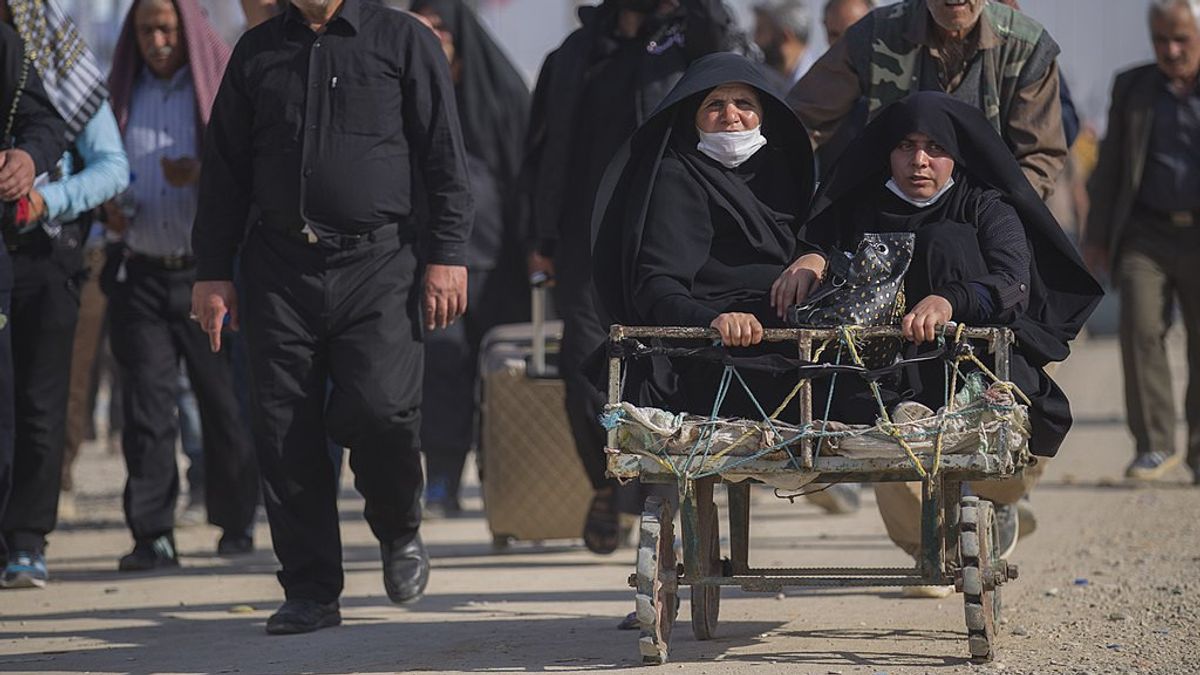
JAKARTA - Iran's supreme leader, Ayatollah Ali Khamenei, has issued a new fatwa regarding the mandatory use of head coverings or headscarves for female cartoon characters. Discourse that invites questions. But such rationale is not a sudden one for Iran. The 1979 Islamic Revolution greatly affected the Land of the Mullahs.
Quoted from IranWire, Khamenei made the discourse when asked whether his party was confirming the role of the hijab in cartoon characters. Khamenei made a statement regarding this on a channel on Telegram.
"Although wearing the hijab in such a hypothetical situation is not necessary, the hijab in animation is needed because of the consequences of not wearing the headscarf," Khamenei said, quoted Tuesday, February 23.

Even so, it remains to be seen how Khamenei's fatwa will affect the animated films and series that air in Iran. What is clear is that some scholars and religious groups have expressed opposition to foreign films and series that feature women without the headscarf.
The scholars believe the spectacle of women without a headscarf will encourage women to remove their head covering. However, some other religious leaders believe the hijab is not a mandatory thing on the screen. However, there has been no further official comment from the Iranian government on Khamenei's discourse.
Hijab and the Islamic Revolution of Iran

In 2020, there was an advertisement showing women without the headscarf in Iran. The advertisement has the consequences of serious sanctions. Prosecutor in Kermanshah City of West Irian, Shahram Karami judged the female model in the advertisement on charges of immoral acts.
Karami also ordered law enforcement to pursue everyone involved in the production and distribution process of the video advertisement. The Persian-language broadcaster in the US, Radio Farda, reported that four people were arrested in connection with the ad case.
[/ read_more]
The Islamic revolution of 1979 brought significant changes for Iran. Before the revolution, the Shah of Iran had banned the wearing of the headscarf. He often ordered the police to forcibly remove the women's headscarves.
Reported by the BBC, even until 1976, many Iranian women dressed in Western-style. Many of them wore tight jeans, miniskirts or tops with sleeves. In 1977, hair salons in Tehran were still exploring their heyday.

Post-Islamic Revolution, hair salons are not completely depleted. It still exists, but is closed only to women. People will no longer find men in the same hairdressing shops as women.
University of York Professor of Women's Studies Baroness Haleh Afshar who grew up in Iran explained the situation at that time. The women, he said, would immediately put their head covering back on before leaving the salon.
"Some people may also operate secret salons in their own homes where men and women can mix," Afshar said.
In 1979, immediately after taking power in Iran, Ayatollah Ruhollah Khomeini issued a fatwa that all women are required to wear the headscarf, regardless of religion or nationality. The fatwa invited resistance.
On March 8, on International Women's Day, thousands of women from all walks of life protested against the mandatory hijab rule. It was one of the earliest resistances of Khomenei's hijab policy.
However, in 1983, the Iranian parliament decreed that women who do not cover their hair in public will be punished with 74 lashes. Continued, in 1995, women who do not veil could face 60 days in prison.
The values that Khomeini tried to uphold continue today, at least if you look at the last case of advertisements without a headscarf. And seeing Elsa, Snow White, or even Rapunzel - known for her beautiful hair as her strength - wearing a headscarf on Iranian television is possible.
BERNAS OthersThe English, Chinese, Japanese, Arabic, and French versions are automatically generated by the AI. So there may still be inaccuracies in translating, please always see Indonesian as our main language. (system supported by DigitalSiber.id)









